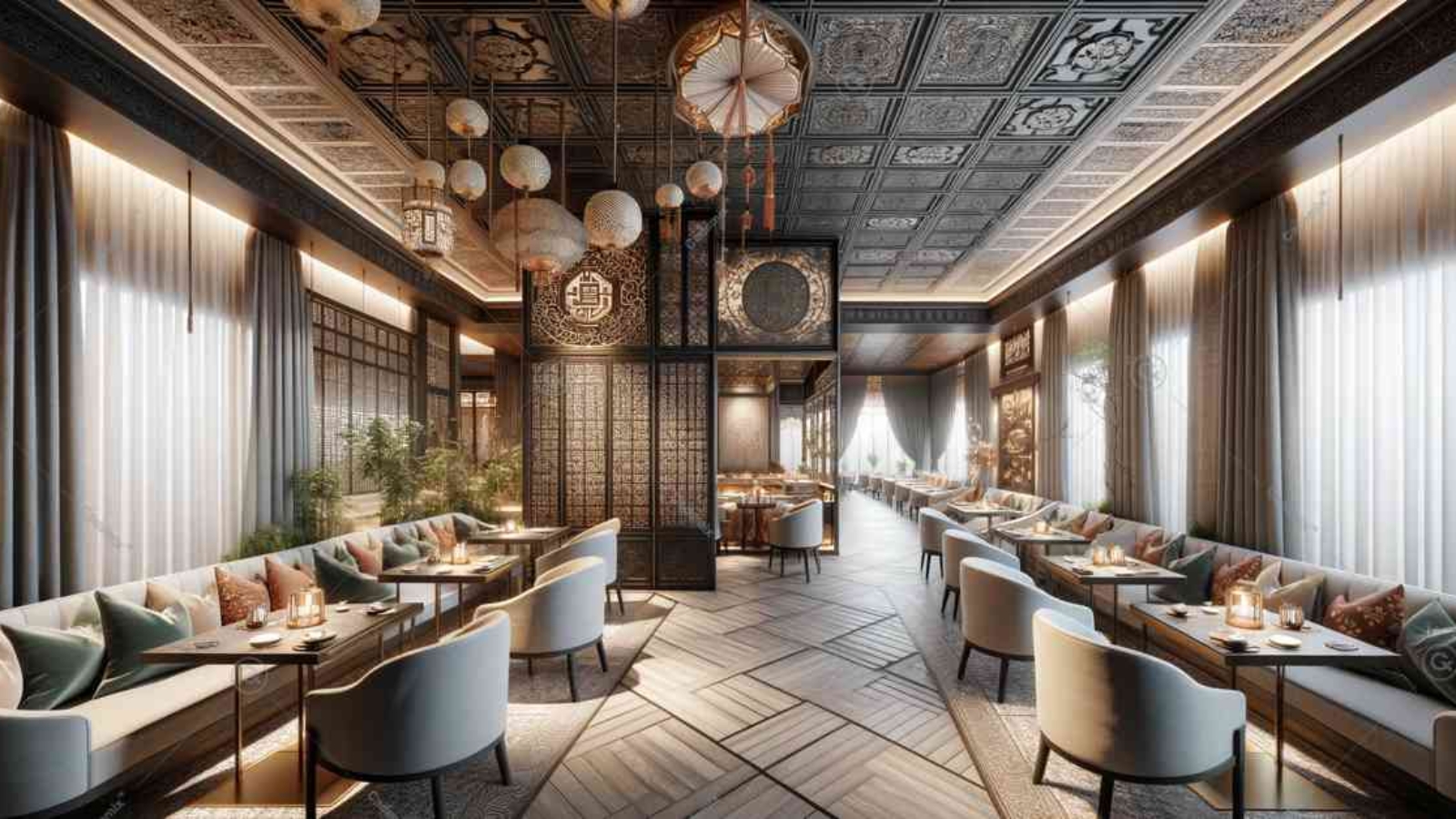In this article, we delve into the integration of minimalism and human-centered design within the realm of restaurant interior design, showcasing how these dual philosophies can be harmoniously blended to create both aesthetically pleasing and functionally superior dining spaces. Highlighting the importance of architectural drawings, 3D modeling, and the use of advanced 3D-planning software like AutoCAD and SketchUp, the discussion explores how minimalist simplicity enhances user experience, supported by practical examples and insights from modern architecture. This analysis not only emphasizes the role of designers and architects in shaping contemporary restaurant environments but also underscores the increasing relevance of sustainable design and material selection in crafting spaces that cater to the nuanced demands of today’s clientele.
By Samareh Ghaem Maghami, Associate Technical and Interior Designer at Cademix Institute of Technology
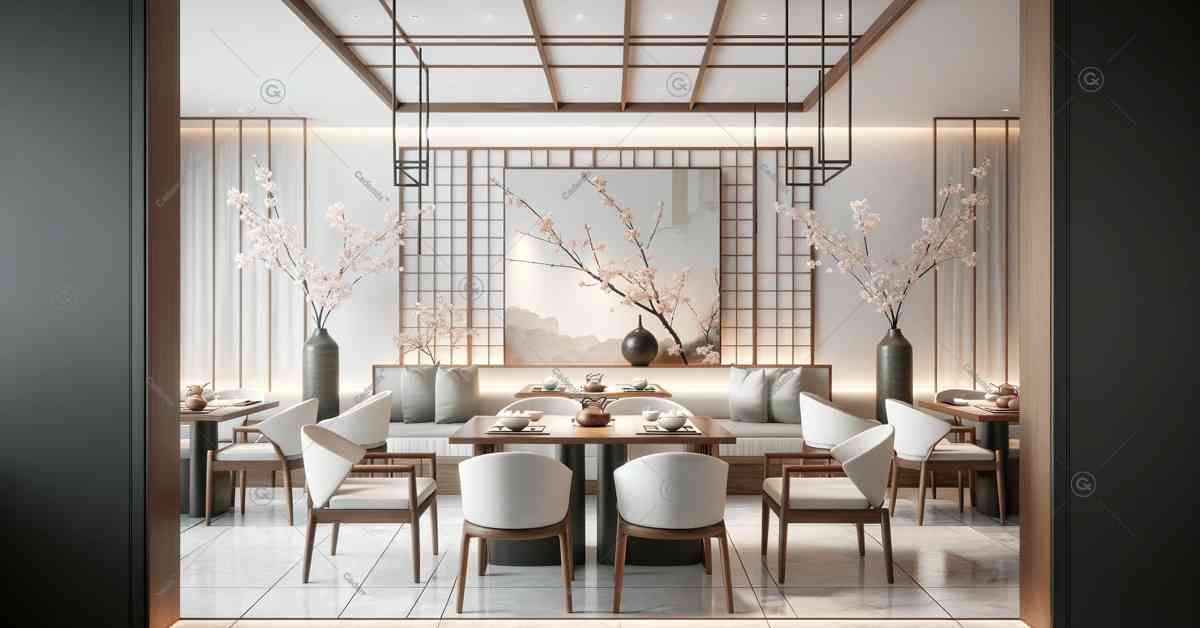
Introduction
In the evolving landscape of restaurant interior design, the fusion of minimalism and human-centered design principles offers a fresh perspective on creating spaces that are both visually striking and intrinsically accommodating to the diner’s experience. This approach to interior architecture not only emphasizes clean, uncluttered aesthetics typical of minimalist design but also prioritizes the comfort and engagement of every guest, embodying the core tenets of human-centered design. As restaurant owners and designers seek innovative solutions to attract and retain patrons, integrating these design philosophies can significantly enhance the functionality and appeal of dining environments.
The role of a skilled interior designer or architect is pivotal in this process, utilizing tools such as architectural drawings and advanced 3D modeling software like AutoCAD and SketchUp to bring their visionary concepts to life. Through the lens of modern architecture, this article will explore how minimalist design elements such as simplicity, use of natural materials, and monochromatic color schemes can be seamlessly integrated with ergonomic layouts and empathetic service design to create inviting and efficient restaurant spaces.
As the demand for more dynamic and sustainable designs grows, this integration not only responds to the aesthetic and practical needs of the modern diner but also aligns with emerging trends in design innovation and sustainability. This article aims to provide restaurant owners, room designers, and architects with actionable insights on how to harness the power of minimalism and human-centered design to foster environments that resonate with today’s discerning customers, ensuring a memorable dining experience that encourages repeat visits.
Understanding Minimalism in Interior Architecture
Minimalism, a design philosophy celebrated for its clarity, simplicity, and thoughtful reduction of elements, has profoundly influenced the field of interior architecture, particularly in restaurant design. This aesthetic paradigm emphasizes less to achieve more, focusing on the essentials to create spaces that are both visually calming and functionally pure. By stripping away the superfluous, minimalist interior design not only enhances the architectural bones of a space but also promotes a serene and cohesive environment.
In the context of restaurant interior design, minimalism manifests through clean lines, uncluttered spaces, and a monochromatic color palette complemented by the natural beauty of understated materials. Such environments often feature a harmonious blend of natural light, bare essentials, and minimal decorative elements, which together create a tranquil dining experience. The minimalist approach extends beyond mere aesthetics, influencing how visitors interact with the space and each other, encouraging a focused and intimate dining atmosphere.
Key components of minimalist design in restaurant interiors include:
- Simplicity in Form and Furniture: Furniture and decor are chosen not only for their functionality but also for their simple forms and lines. This simplicity helps to reduce visual noise and allows the architecture itself—often characterized by geometric purity and open spaces—to take center stage.
- Monochrome and Neutral Palettes: Colors are typically subdued, relying on shades of whites, blacks, and greys, which work together to foster a sense of calm and spaciousness. Occasional accents in bolder colors may be used sparingly to draw attention to specific design features or artworks.
- Use of Natural Materials: Wood, stone, and metal are commonly used for their texture and natural beauty, which add warmth and authenticity to the minimalist design. These materials are often left in a somewhat raw state to celebrate their inherent qualities and textures.
- Maximizing Natural Light: Incorporating large windows or skylights to enhance the presence of natural light is a crucial aspect of minimalist interiors. This not only improves the aesthetic quality of the space but also contributes to energy efficiency and the well-being of guests.
- Functional Layout and Spatial Economy: Every element within a minimalist-designed space serves a purpose. The spatial arrangement is meticulously planned to ensure smooth flow and movement, enhancing the overall functionality of the dining area.
The impact of minimalism in restaurant interior design extends beyond mere visual appeal; it is a strategic choice that aligns with modern preferences for authenticity, sustainability, and unpretentious luxury. By adopting minimalist principles, designers and architects can create spaces that are not only contemporary and stylish but also deeply resonant with the values of clarity and simplicity in today’s fast-paced world. This approach to design not only meets the aesthetic and practical demands of modern diners but also underscores the importance of thoughtful reduction and precision in creating meaningful spaces.
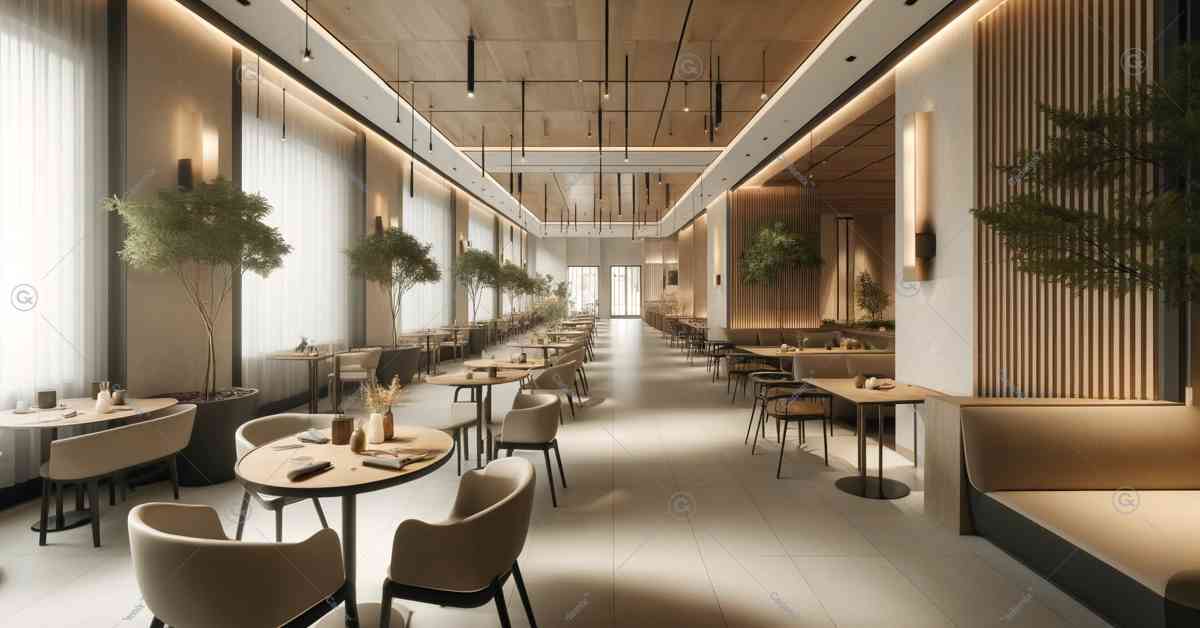
Exploring Human-Centered Design Principles
Human-centered design (HCD) is a framework that prioritizes the human perspective in every step of the design and management process. It involves a deep understanding of the users’ needs, contexts, behaviors, and experiences to create solutions that are tailor-made to enhance their environment, functionality, and overall satisfaction. In restaurant interior design, employing human-centered design principles means focusing on creating spaces that are not only visually appealing but also comfortable, accessible, and conducive to a positive dining experience.
Core Aspects of Human-Centered Design in Restaurants:
- Empathetic Understanding of Customer Needs: At the heart of HCD is empathy, which involves gaining insights into the diner’s experiences and expectations. This could involve feedback mechanisms, direct observations, or using design thinking workshops with staff and customers to understand what truly impacts their experience positively and negatively.
- Ergonomic Comfort and Accessibility: Seating, table height, lighting, and even the acoustics of a restaurant are designed with the user’s comfort in mind. Ergonomics play a crucial role in ensuring that the physical environment does not strain the diner in any way, making accessibility a key focus for an inclusive design that accommodates all users, including children, the elderly, and people with disabilities.
- Engagement and Interaction Design: Human-centered design also considers how users interact with the environment. In a restaurant setting, this might involve the layout of the space to encourage social interaction or provide intimate spaces for private conversations. Design elements are used to create the desired atmosphere and flow that meet the strategic goals of the restaurant, whether it’s vibrant and energetic or calm and private.
Integrating Technology with Human-Centered Design:
- Enhanced Service Delivery: Innovative use of technology can enhance the dining experience. For example, the integration of digital menus, QR codes for ordering, and even augmented reality experiences can streamline service delivery and provide interactive experiences for customers.
- Feedback and Personalization: Technology also enables better collection and analysis of customer feedback, which can be used to continually refine and personalize the dining experience. This adaptive approach ensures that the restaurant remains aligned with customer preferences and expectations.
Benefits of Human-Centered Design in Restaurant Interiors:
- Improved Customer Satisfaction: By focusing on the needs and comforts of diners, restaurants can significantly enhance customer satisfaction, leading to higher retention rates and word-of-mouth promotion.
- Operational Efficiency: Well-designed spaces that consider the end-user can improve operational efficiency by optimizing the layout for both customers and staff, reducing crowding, and streamlining service interactions.
- Brand Differentiation: Employing human-centered design can set a restaurant apart from competitors by offering unique, memorable experiences that reflect the brand’s commitment to customer care and innovation.
By incorporating human-centered design principles, restaurant interiors can transform from mere eating places to dynamic environments that respond actively to the needs and preferences of diners. This approach not only enhances the functionality and aesthetic appeal of restaurant spaces but also fosters a deeper connection between the brand and its customers, creating a loyal customer base that values thoughtful and responsive design.
Exploring Human-Centered Design Principles in Restaurant Interiors
Human-centered design (HCD) emphasizes deeply understanding and addressing the specific needs and experiences of restaurant patrons, making it a crucial strategy in modern interior architecture. This design philosophy prioritizes the comfort, accessibility, and overall enjoyment of users, ensuring that every aspect of the restaurant’s interior is crafted to enhance the dining experience.
Key Elements of Human-Centered Design in Restaurant Spaces:
- User-Centered Design Approach: By focusing on empathy and the end-user’s perspective, HCD advocates for a design process that starts and ends with the patron’s needs. This approach involves extensive user research, including interviews, behavioral observations, and feedback loops, ensuring that the restaurant layout, lighting, seating, and even acoustics are optimized for customer satisfaction.
- Ergonomic and Accessible Design: Restaurant interiors designed with human-centered principles ensure that furniture and space arrangements cater to physical comfort and ease of movement for all guests, including those with disabilities. Ergonomic design enhances the usability and accessibility of spaces, aligning with sustainable design trends that prioritize long-term user health and environmental responsibility.
- Interactive and Engaging Environments: Integrating human-centered design in restaurant interiors also means creating spaces that facilitate engagement and interaction. Strategic placement of design elements can influence customer flow and interaction patterns, enhancing the social experience and aligning with service design principles.
Technology Integration in Human-Centered Design:
- Digital Enhancements for Improved Service: Innovative technology solutions like digital ordering systems, interactive menus, and QR codes are increasingly incorporated into the design of modern restaurants. These tools not only streamline the dining experience but also cater to the tech-savvy consumer, offering convenience and personalization.
- Real-Time Feedback and Adaptation: Advanced technology aids in collecting and analyzing customer feedback in real-time, allowing restaurant managers and designers to adapt their spaces and services dynamically to meet evolving demands. This adaptive design process is crucial for maintaining relevance and customer satisfaction in a competitive market.
SEO Impact and Business Benefits:
- Enhanced Customer Loyalty and Retention: Human-centered design directly contributes to creating memorable dining experiences that encourage repeat business. Restaurants that prioritize user experience in their interior design often enjoy higher customer loyalty and positive reviews, critical factors for business success in the hospitality industry.
- Operational Excellence and Efficiency: Well-designed spaces reduce operational hurdles, improve staff efficiency, and minimize customer discomfort, leading to smoother service delivery and enhanced profitability.
- Market Differentiation and Brand Identity: Employing human-centered design principles distinguishes a restaurant from its competitors, establishing a strong brand identity focused on customer care and innovative design solutions.
By seamlessly blending human-centered design with minimalist aesthetics, restaurant interiors can achieve a balance of form and function that appeals to contemporary diners. This holistic approach not only enriches the visual appeal of dining spaces but also ensures they are intuitively aligned with human needs and behaviors, marking the epitome of modern architectural design in the hospitality sector.
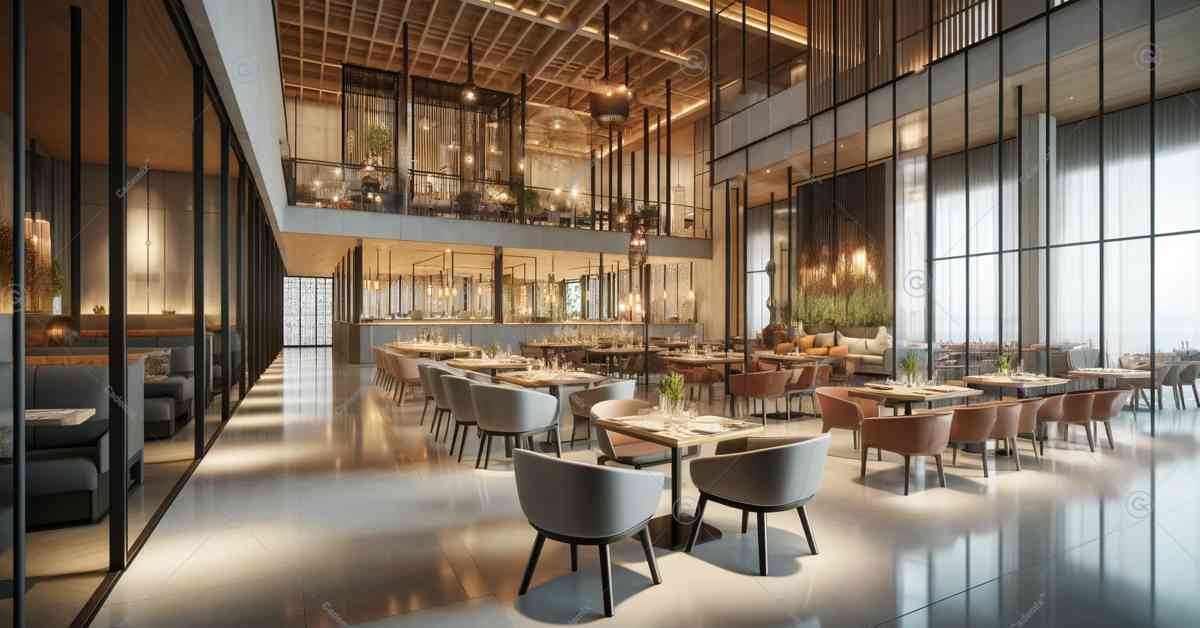
The Synergy Between Minimalism and Human-Centered Design
The integration of minimalism and human-centered design in restaurant interiors presents a compelling synergy that enhances both the aesthetic appeal and functional efficacy of dining spaces. By blending the clean, uncluttered ethos of minimalism with the empathetic, user-focused principles of human-centered design, restaurants can create environments that are not only visually striking but also exceptionally accommodating to guests’ needs.
Enhancing User Experience through Design Synergy:
- Simplified Complexity: Minimalism in interior design simplifies the space, reducing visual clutter and focusing on the essentials. When combined with human-centered design, this simplicity translates into an environment that is easy to navigate and interact with, making the dining experience more pleasant and less stressful for patrons.
- Functional Aesthetics: Minimalist design is renowned for its functional aesthetics, where every element serves a purpose. Integrating human-centered design ensures that these elements are also optimized for user comfort and practicality, from ergonomically designed furniture to strategically placed lighting that enhances mood and visibility.
- Spatial Harmony and Flow: The minimalist approach to using space effectively complements human-centered design’s focus on creating optimal flow within interiors. This synergy facilitates smooth movement for both patrons and staff, enhancing operational efficiency and reducing the likelihood of discomfort or accidents.
Case Studies and Real-World Applications:
- Example of a Successfully Integrated Restaurant Interior: Highlighting a specific case where minimalism and human-centered design have been effectively combined can provide practical insights into the process and benefits. This could involve a detailed analysis of a restaurant known for its innovative use of space and customer-focused design elements.
- Impact on Customer Satisfaction and Business Success: Discuss how this integrated approach has led to measurable improvements in customer satisfaction, increased repeat business, and positive reviews, which are crucial for the restaurant’s market reputation and financial success.
Benefits of Combining Minimalism with Human-Centered Design:
- Aesthetic and Operational Efficiency: The minimalist design ensures that the space is not only beautiful but also functional, with clean lines and open layouts that are easy to maintain and adapt. Human-centered design complements this by ensuring the space meets the dynamic needs of customers, from accessibility to comfort, enhancing the overall service quality.
- Sustainability and Material Innovation: Both design philosophies often emphasize sustainability, which can be highlighted by the use of eco-friendly materials and sustainable practices. This not only appeals to environmentally conscious consumers but also contributes to a broader corporate responsibility agenda.
- Enhanced Brand Identity: Restaurants that adopt this dual approach can forge a strong brand identity that resonates with modern consumers who value both simplicity and personalized experiences. This strategic differentiation is vital in a competitive industry like hospitality.
By merging minimalism with human-centered design, restaurant interiors can achieve a balance that satisfies aesthetic desires and functional needs, creating spaces that are not just places to eat, but destinations that offer a holistic and enjoyable dining experience. This integration not only catcs the eye but also captures the heart, ensuring that every aspect of the restaurant’s design is aligned with the ultimate goal of customer satisfaction and business success.
Practical Implementation in Restaurant Design
Implementing a design that seamlessly integrates minimalism and human-centered design into restaurant interiors requires careful planning, innovative thinking, and a deep understanding of both design philosophies. This section outlines a practical approach for architects, interior designers, and restaurant owners who aim to apply these principles effectively to create spaces that are both stylish and accommodating.
Step-by-Step Guide to Integrating Design Principles:
- Initial Concept and Design Vision: Begin with a clear design vision that incorporates the main elements of minimalism and human-centered design. This vision should focus on creating a space that is both visually clean and tailored to enhance the dining experience. Employ tools like mood boards and conceptual sketches, utilizing software like AutoCAD or SketchUp for precision and clarity.
- Detailed Architectural Planning: Use architectural drawings to map out the space, considering the flow of movement and the functional arrangement of furniture and fixtures. Emphasize open spaces and natural lighting as dictated by minimalist aesthetics while ensuring the layout addresses the practical needs of all users, reflecting the core tenets of human-centered design.
- Selection of Materials and Color Schemes: Choose materials that are sustainable and reflect the minimalist color palette of neutral tones. Materials should also be durable and conducive to creating a welcoming atmosphere. Incorporate textures and elements that add warmth and comfort, adhering to the principles of human-centered design.
- Ergonomic Furniture and Comfort Considerations: Select furniture that not only complements the minimalist style but also offers ergonomic benefits. Consider the diversity of guests, including accessibility for individuals with disabilities, ensuring all furniture is both functional and aesthetically pleasing.
- Integrating Advanced Technology: Implement technology solutions that enhance the dining experience without overwhelming the minimalist design. Options like integrated ordering systems, subtle digital signage, or ambient lighting control can improve functionality and customer interaction, aligning with the human-centered approach.
- Execution and Installation: With detailed plans and selections made, move forward with the installation process. This phase should be closely managed to ensure that all elements align with the initial design intentions and that the space functions as intended.
- Feedback Loop and Iterative Adjustments: After opening, actively seek out and analyze feedback from customers and staff regarding the design’s impact on their experience. Use this data to make iterative adjustments that further refine and optimize the dining environment.
Leveraging Cross-Functional Team Collaboration:
To ensure a successful design process, it is critical to foster collaboration among a cross-functional team that includes designers, architects, technology specialists, and operational staff. Each team member brings a unique perspective and expertise, contributing to a comprehensive design strategy that is innovative, feasible, and responsive to the needs of restaurant patrons.
Utilizing 3D-Modeling and Planning Software:
Advanced tools such as 3D modeling and planning software (e.g., AutoCAD, SketchUp) are invaluable for visualizing and planning interior spaces. These technologies allow for precise modeling of interior layouts and the simulation of different design scenarios, providing a visual and practical preview of the finished space before physical work begins.
By following these steps and focusing on effective collaboration and advanced planning tools, restaurant interiors can be transformed into modern, minimalist, and human-centered environments. This not only enhances the aesthetic appeal and functionality of the space but also significantly boosts the overall customer experience, aligning perfectly with the latest trends in restaurant design innovation.
Challenges and Considerations in Combining Minimalism and Human-Centered Design
Merging minimalism with human-centered design in restaurant interiors, while beneficial, presents unique challenges and considerations. Navigating these hurdles is essential for creating spaces that not only embody aesthetic simplicity but also address the diverse and dynamic needs of diners. This section explores the potential challenges and strategic considerations necessary to achieve a balanced and successful design outcome.
Identifying and Overcoming Design Challenges:
- Balancing Form and Function: One of the primary challenges is maintaining the minimalist aesthetic without compromising the functionality required for a comfortable dining experience. Designers must carefully select elements that adhere to both design philosophies without allowing one to overpower the other. This balance requires innovative thinking and precise execution.
- Material Selection and Sustainability: Choosing the right materials that are both minimalist in appearance and sustainable, while also meeting the durability demands of a busy restaurant, can be complex. Designers must consider factors such as environmental impact, maintenance, and the longevity of materials, ensuring they align with sustainable design principles and the overall design ethos.
- Adapting to Space Constraints: Often, space limitations in urban environments challenge the implementation of minimalist designs, which typically require open, uncluttered areas. Architects and designers need to employ clever spatial solutions that maximize utility without cluttering the environment, making every element and piece of furniture count.
- Cost Implications: While minimalist design often involves fewer materials and decorations, the high quality and custom nature of the materials typically used can drive up costs. Additionally, integrating sophisticated human-centered design features, especially those involving advanced technology, can further increase expenses. Effective budget management and creative resource allocation are crucial.
Strategic Considerations for Success:
- Cultural and Contextual Relevance: It’s important for designers to consider the cultural context and local environment of the restaurant. What works in a minimalist, human-centered design in one cultural setting may not resonate in another. Tailoring designs to reflect local tastes and behaviors can enhance relevance and customer engagement.
- Incorporating Flexible Design Elements: Design flexibility is key in adapting to the changing needs and expectations of restaurant patrons. Incorporating modular furniture and adjustable lighting systems can allow the space to evolve with trends and customer preferences, ensuring longevity and continued relevance.
- Focus on User Experience: Continuously gather and analyze customer feedback to refine and adjust the design. This focus on user experience helps ensure that the space remains practical, enjoyable, and aligned with diners’ expectations, driving repeated business and positive reviews.
- Collaboration Between Design and Operational Teams: To ensure that design elements are practical and enhance operational efficiency, ongoing collaboration between the design team and restaurant operational staff is essential. This collaboration can help identify potential issues early in the design process and integrate operational needs into the overall design strategy.
By addressing these challenges and considerations, designers and restaurant owners can effectively integrate minimalism and human-centered design to create distinctive, functional, and appealing dining spaces. This holistic approach not only meets the aesthetic and practical demands of modern diners but also sets a strong foundation for long-term success in the competitive restaurant industry.
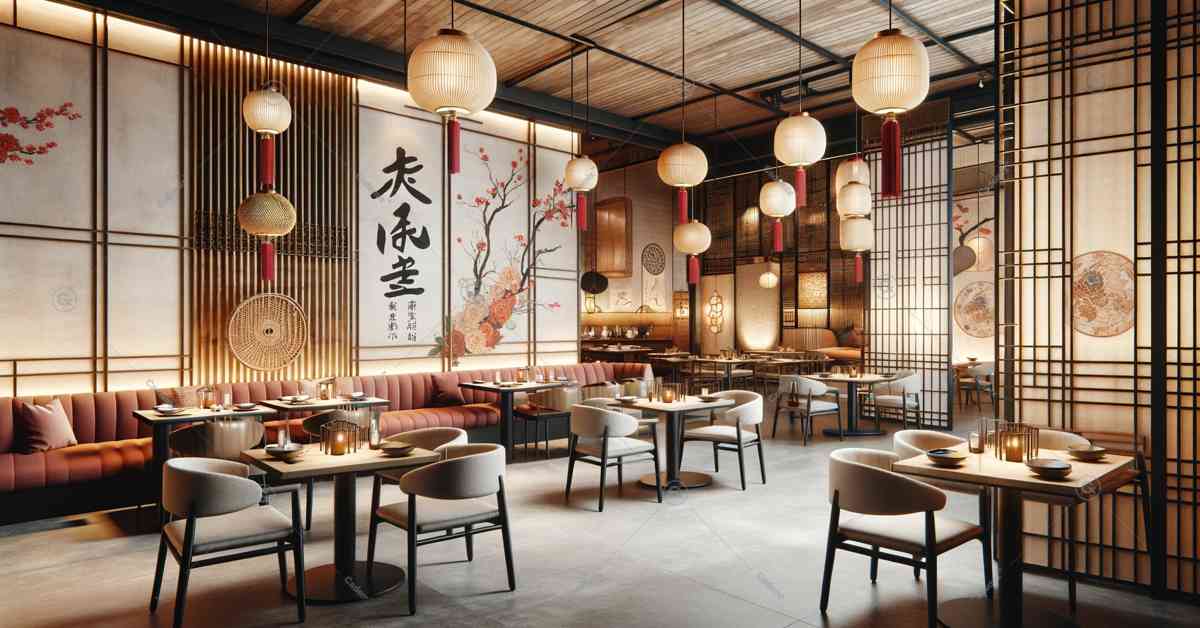
Future Trends in Restaurant Interior Design
The restaurant industry continues to evolve rapidly, influenced by changes in consumer preferences, technological advancements, and a growing emphasis on sustainability and personalized experiences. As we look forward, the integration of minimalism and human-centered design in restaurant interiors is poised to influence future trends significantly. This section explores the emerging trends that are set to shape the future of restaurant design.
Innovations Driving Future Restaurant Interiors:
- Technology Integration: As digital technology becomes more sophisticated, its integration into restaurant design is becoming increasingly seamless and functional. Future restaurant interiors will likely feature advanced IoT (Internet of Things) devices that enhance customer interaction and operational efficiency, such as smart tables that allow for instant ordering and digital payment, or AI-driven ambient controls that adjust lighting and temperature in real-time based on occupancy and weather conditions.
- Sustainable and Eco-Friendly Designs: Sustainability is becoming a cornerstone in all areas of interior design, especially in the restaurant industry. Future designs will emphasize not only the use of sustainable materials but also the implementation of green technologies such as energy-efficient appliances, water-saving fixtures, and systems for recycling and managing waste. Restaurants will aim to achieve lower carbon footprints, responding to the increasing consumer demand for environmentally responsible businesses.
- Emphasis on Multifunctional Spaces: The future of restaurant interiors will see a greater emphasis on versatility and multifunctionality. Spaces that can easily transition from a daytime café to an evening lounge, or offer private event spaces, will become more common. This flexibility allows restaurants to maximize their utility and appeal to a broader audience throughout different times of the day and for various occasions.
- Experience-Driven Design: More than ever, diners are looking for unique and memorable dining experiences. Future restaurant designs will incorporate elements that engage the senses beyond just taste. This might include immersive elements like scent marketing, visual projections, and curated soundscapes that enhance the thematic and culinary experience of the restaurant.
- Local and Cultural Integration: Restaurants will increasingly incorporate local art, craftsmanship, and cultural themes into their designs. This approach not only supports local artists and craftspeople but also helps to create a more authentic and enriching dining experience that resonates with both local patrons and tourists.
- Personalization through Design: With advancements in data analytics and customer relationship management technologies, restaurants will be able to offer more personalized dining experiences. Interior designs will adapt to create spaces that can be personalized for individual preferences or special occasions, further enhancing the customer’s connection to the space.
Architectural and Design Innovations: Renowned architects and designers, like Zaha Hadid, have already demonstrated how futuristic and innovative forms can be functional and aesthetically pleasing. As these influences trickle down into mainstream restaurant design, expect to see more fluid, dynamic shapes and layouts that challenge traditional aesthetics and functionality.
By staying ahead of these trends, designers and restaurant owners can ensure that their spaces not only meet current demands but are also well-positioned for future developments. Integrating minimalism with human-centered design offers a robust framework for creating adaptable, appealing, and sustainable restaurant interiors that promise to captivate and satisfy future generations of diners.
Conclusion
The fusion of minimalism and human-centered design in restaurant interiors represents a forward-thinking approach that not only meets the aesthetic demands of the modern diner but also enhances their overall experience. By embracing these intertwined design philosophies, restaurants can create spaces that are both visually appealing and highly functional, ensuring that every aspect of the diner’s experience is considered and catered to.
Key Takeaways from Integrating Minimalism and Human-Centered Design:
- Enhanced Aesthetic Appeal and Functionality: Restaurants adopting this integrated design approach benefit from clean, uncluttered interiors that are easy to navigate and soothing to the senses, paired with functional layouts that anticipate and meet customer needs.
- Increased Customer Satisfaction and Loyalty: By focusing on creating environments that prioritize user comfort and enjoyment, restaurants are likely to see higher customer satisfaction rates, leading to increased loyalty and positive word-of-mouth referrals.
- Operational Efficiency: Efficient use of space and thoughtful design not only improve the visual appeal but also enhance operational efficiency, making it easier for staff to deliver prompt and high-quality service.
- Sustainable Practices and Brand Identity: Emphasizing sustainability in material selection and design practices aligns with the growing consumer preference for environmentally responsible businesses, helping to build a strong, ethical brand identity.
Encouragement for Continued Innovation:
Restaurants and designers are encouraged to continue exploring innovative ways to integrate minimalism and human-centered design. The dynamic nature of consumer preferences and the rapid advancement of technology offer ongoing opportunities for evolution and creativity in restaurant interior design. Engaging with professional interior designers, leveraging the latest 3D planning software like AutoCAD or SketchUp, and staying informed about emerging trends are essential for maintaining relevance and success in a competitive market.
Final Thoughts:
As we look to the future, the role of designers and architects in creating restaurant spaces that are not only beautiful but also highly responsive to human needs will become increasingly important. By fostering environments that reflect a thoughtful balance between minimalism and human-centered design, the restaurant industry can continue to thrive, offering spaces that delight and accommodate customers in equal measure. This integration not only makes good business sense but also elevates the dining experience to new heights, setting new standards for excellence in restaurant design.
In conclusion, the commitment to blending minimalism with human-centered design in restaurant interiors is more than a trend it is a sustainable approach that enriches customer experiences and supports business growth. It exemplifies how thoughtful design can transform ordinary spaces into extraordinary places that people return to time and again.
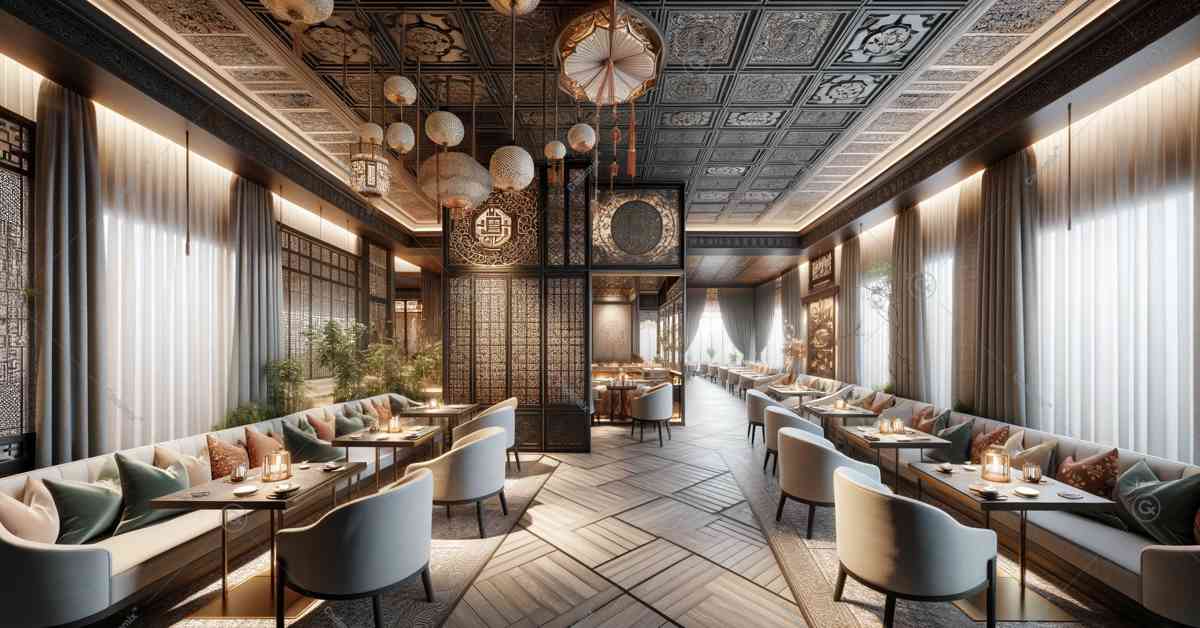
About the Author
Samareh Ghaem Maghami is a distinguished scholar and practitioner in the fields of interior design and event management. Born and raised in Iran, she pursued her university studies in painting before dedicating over six years to interior decorating and three years to event management. Currently residing in Austria, Samareh is furthering her expertise as a master’s student at Wiener Neustadt, focusing on practical and executive work in her field.
Her deep commitment to aesthetics and functionality shines through in her scholarly and professional projects, garnering her recognition in both academic circles and industry settings. Readers interested in exploring the intricate balance between form and utility in design are encouraged to read her other articles and connect with her for insightful discussions and potential collaborations.
Please feel free to contact her under:
E-mail: sam.gh.maghami@gmail.com
E-mail: samareh.ghaem-maghami@cademix.org
LinkedIn: https://www.linkedin.com/in/samareh-ghaem-maghami
Xing: https://www.xing.com/profile/Samareh_GhaemMaghami

